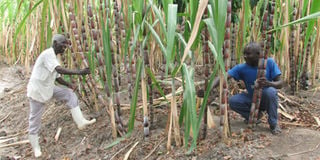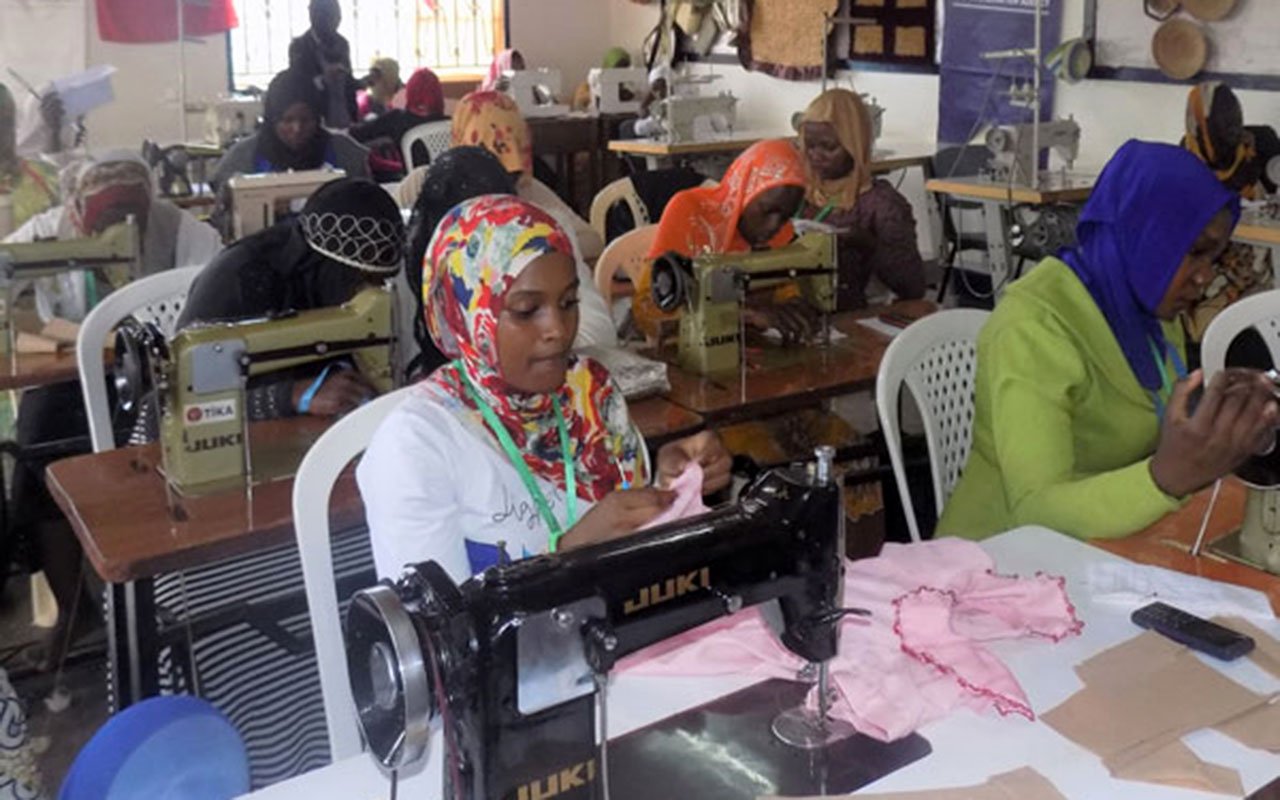Prime
Making an extra buck with sugar cane growing

Mzee Aventino Nakaana attends to his sugar cane crop. Being an all-round season crop, sugarcane growing can help farmers get income throughout the year. PHOTOS BY MICHAEL J. SSALI
All too often, an ordinary smallholder farmer may not have a steady source of income to meet the incidental day to day expenses in the home. Many such farmers depend, for their income, on the sale of a cash crop that is normally harvested perhaps once or twice a year. However, between the harvests they experience hardships in purchasing household items such as soap and books for their school going children, or even medicine when sickness strikes.
This is a problem Mr Aventino Nakaana, a coffee farmer at Manja Village, Kisekka Sub-county, in Lwengo District at one time faced with about 30 years ago. He was lucky to find a workable solution. He started growing sugar cane which has so far catered for his day to day expenses, leaving income from seasonal cash crops like coffee to cater to bigger needs.“Coffee pays well since when I sell it I have an opportunity to get a lump sum of money,” he said during a recent visit to his home. “One gets a large amount of money at a go and can invest it in a project like keeping a diary cow or poultry.
“But the good thing about sugarcane is that the farmer has the chance to sell the crop both in large amounts or in small amounts like in two or five. It is the kind of crop that brings in cash nearly all days.”
Nakaana now lives in a modern house built 10 years ago with bricks and cement - evidence that he earns more money or plans better than many other farmers on his village. “I have an income from coffee but as you can see sugarcane growing has also contributed so much to my family’s welfare,” he said before pointing to the thousands of mature sugar canes in the garden which lies in the valley next to his coffee plantation.
“A trader in Kampala has made an order for 10,000 sugarcanes and will be coming next week to pick them. We have agreed he will be paying me Shs300 per sugarcane. But even after he has taken his stock, as you can see, there will still be a lot of them left for my small buyers who come daily for one or two.” He has built a shade right at the sugarcane garden where he or anyone of his family members sits to serve the customers who keep coming to make purchases. They are mostly teenage boys and girls from the village. After a hard day’s work here, someone suggests that chewing sugarcane from Nakaana’s place could be a good energy booster. “And sometimes the head of the home agrees.” he says.
Fruit vendors support the venture
Ever thought of where the people who sell chopped pieces of sugarcane in plastic containers in Kampala and other towns get their supplies? They measure off a node or two and chop the piece into smaller pieces which they put into containers and sell at not less than Shs500 to customers in arcades or even in their offices. It is farmers like Nakaana that produce the sugarcanes. If coffee brings in a lump sum of money once or twice a year, people like Nakaana may keep harvesting 10,000 sugar canes every now and then and selling them at She300 each at a go. “The advantage with sugarcane is that it can be harvested all throughout the year,” Nakaana said. “It does not even require any particular type of soil to do well as long as that soil is deep and well drained.”
Just to enhance production Mr Nakaana applies cow dung to his sugarcane garden, which measures about two acres. “I dig holes here and there between the plants and bury the cow dung in the soil. But it is also good to think carefully about spacing which is important for easy inspection by the farmer who must keep walking through the rows of sugarcane plants checking for possible crop disease attack. For best results five feet between the plants isn’t bad.”
How to plant sugarcane
Planting is done by burying longitudinally pieces of sugarcane measuring about three nodes some six or so inches deep in the ground. Harvesting he said begins after 14 months. He also insisted that a sugarcane garden must be kept free of weeds and that as the plants grow the farmer should ensure proper pruning and trimming to discourage pests. “When the covering dry leaves are removed, the sugarcane grows better, and becomes exposed and more attractive to the customers.”




